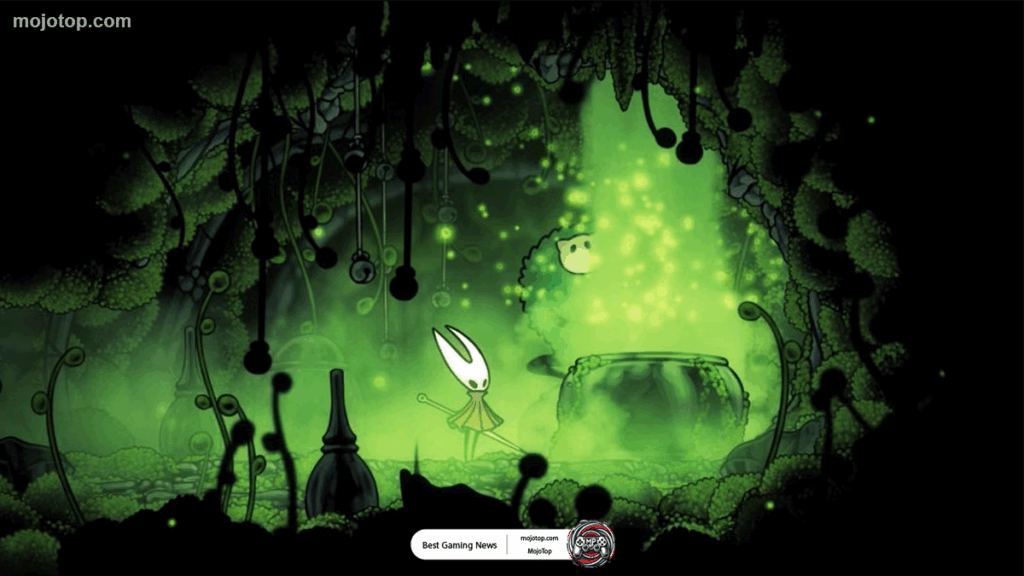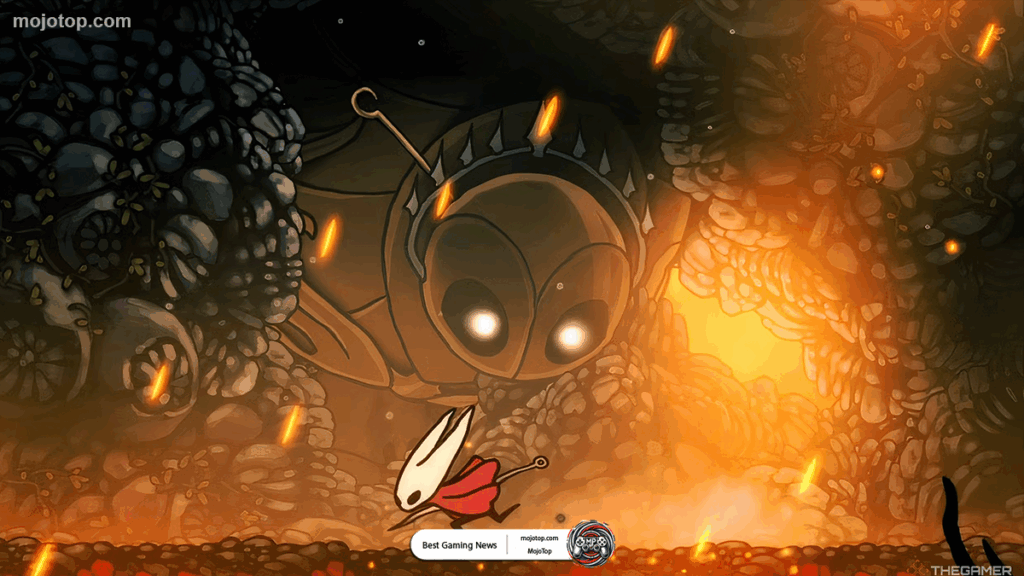Hollow Knight Silksong Review: 5 Moments That Stun Gamers
A deep dive into Hollow Knight Silksong gameplay, story, and combat — uncover what makes this long-awaited sequel worth the hype.
From the moment Hornet begins her ascent through the haunting realm of Pharloom, Hollow Knight Silksong gameplay sets itself apart with a palpable sense of agility and vertical exploration. In this Hollow Knight Silksong review, early impressions highlight the richly hand-drawn environments, enhanced movement mechanics, and challenging combat that both honors and expands the metroidvania formula.
One of the first standout changes is Hornet’s finesse in traversal. Her sprint is noticeably faster, and jumps offer greater height and precision—a refreshing shift that lets players backtrack or ascend with fluid control. Combined with her ability to mantle ledges and launch into the air, this creates a traversal system that feels both responsive and dynamic.
But with that agility comes a learning curve. The beloved pogo jump mechanic from Hollow Knight has been replaced by a forward-leaning, diagonal dive attack—a design choice that fundamentally alters platforming rhythm. While satisfying in combat, this mechanic introduces complexity in platform-based navigation, making some sequences unexpectedly tricky for veterans.
This shift extends into combat. The new dive attack allows Hornet to bounce off foes, reposition midair, and weave in aerial combos, reflecting a more acrobatic and momentum-driven approach to engagements. Yet, these changes are double-edged; mastery of timing and spatial awareness becomes key to survival—especially in those first few encounters.
A defining hallmark of the gameplay experience is difficulty—not in spite of it, but because of it. Many players note that Hollow Knight Silksong gameplay comes with a steeper challenge right out of the gate. Movement mechanics, aggressive enemy patterns, and punishing boss fights raise the bar significantly compared to the original.
Still, this doesn’t mean the experience is unfair. This Hollow Knight Silksong review in progress suggests early fights may be slightly more forgiving than those in the predecessor, offering a more balanced opening curve for new and returning players.
Early narrative elements also contribute to first impressions. Arriving in Pharloom with little context, players immediately notice the lore-driven environmental design—ruined pilgrim pathways, bone-littered halls, and an atmosphere that evokes real history and desolation, similar to Dark Souls’ sense of a world that’s long outlived its inhabitants.
Finally, the sheer scale of content supports these gameplay revelations. With over 40 bosses, more than 200 enemies, and around 100 rest benches—plus the addition of side quests, new currencies like Rosaries and Shell Shards, and ability-modifying crests—the gameplay foundation in Hollow Knight Silksong feels expansive and thoughtfully evolved.
You can buy Hollow Knight Silksong on Steam, Epic Games Store, Nintendo eShop, Xbox Store, and PlayStation Store. If you want to know about Steam alternatives, read MojoTop Blog.
The World of Pharloom: A Stunning Expansion
In this Hollow Knight Silksong review, the kingdom of Pharloom emerges not just as another backdrop—but as a fully realized, atmospheric character in its own right. From the first glimpse, Pharloom’s hand-drawn environments captivate with an intricate tapestry of lore-rich zones, each designed to invite exploration through vertical traversal and interconnected pathways.
Unlike the horizontally sprawling Hallownest, Pharloom presents an ascent-based structure. Hornet must climb through zones like Bone Bottom, Greymoor, Deep Docks, Hunter’s March, and ultimately reach the shimmering Citadel perched at the summit . Each area feels distinct: moss-laden caverns echo with dripping water, coral forest fragments shimmer with ethereal glow, and gilded cities exude vestiges of once-sacred grandeur.
What truly distinguishes Pharloom is its art direction. The environments ooze detail and mood—each brushstroke immerses you in a world steeped in pilgrimage, decay, and ritual. A haunting, sorrowful soundtrack underlines every locale, deepening the emotional pull of environmental storytelling
Exploration in Pharloom is as much about the journey as the destination. Hidden alcoves, looping shortcuts, and layered backgrounds give this metroidvania a sense of discovery and vertical exploration that rewards attention, curiosity, and backtracking Towns such as Bone Bottom function as hubs, offering merchants, quest-givers, and lore, grounding the player amid the beauty and danger.
In the context of Hollow Knight Silksong gameplay, Pharloom isn’t merely a stage to fight and traverse—it shapes how players engage with the game. The combination of vertical level design and agility-based movement elevates traversal into a rhythmic dance, not just a means to an end. The abundance of benches throughout implies both expansive scale and deliberate pacing. Alongside the verticality, a new crafting and tool system allows Hornet to build gadgets and abilities, enriching exploration and engagement with the world.
As players progress, Pharloom’s design reveals narrative layers: ruined chapels, silk-entangled corridors, and citizens ensnared by silk madness whisper stories of faith, corruption, and quiet tragedy—much like the evocative worldbuilding in Dark Souls—but in 2D form . This immersive depth makes this Hollow Knight Silksong review of the world’s expansion especially compelling.

Combat Evolution in Hollow Knight Silksong Gameplay
In this Hollow Knight Silksong review, combat takes an exhilarating leap forward. Hornet’s acrobatic combat elevates every encounter into a dance of precision and daring. Unlike the original’s pogo-based rhythm, this evolution in Hollow Knight Silksong gameplay introduces a signature diagonal dive attack—executed by pressing down plus attack in midair—that changes how you approach both offense and platforming. Landing a successful strike sends Hornet flipping upward, allowing rapid follow-up in aerial combos that feel both graceful and powerful.
This diagonal dive is not just stylish; it’s transformative. It enables swift gap-closing maneuvers and adds vertical flair to engagements. But it also demands recalibrated spatial awareness, as the precise 45° angle can lead to misjudged landings—and sometimes fatal mistakes.
Alongside agility, combat in Hollow Knight Silksong gameplay now includes a Silk-based healing system. When Hornet’s Silk gauge is full, she can instantly recover three health points—trading classic slow-focus healing for fast-paced, strategically timed recoveries. Coupled with aggressive enemy behavior and tougher boss attacks, this risk-reward framework pushes players to master both timing and aggression to stay alive.
Early fights in Silksong feel sharper than before. Many foes inflict double damage early on, raising the stakes before you’ve fully acclimated to Hornet’s new toolkit. Still, some reviewers note that opening boss fights may be slightly more forgiving than in the original game, indicating a commitment to challenge tempered by balance.
Combat is enriched further by new tools and crest systems. Hornet can craft gadgets and equip crests to modify her needle attacks or grant extra tool slots—creating personalized loadouts for varied playstyles. Silk skills unlocked at Weaver sites add yet another layer to combat depth, enabling branching attack options that reward exploration and mastery.
Even in brief hands-on previews, reviewers praise the dynamic combat. Armed with throws, dashes, magic attacks, and healing, Hornet moves with a fluidity that refreshes the familiar metroidvania formula. The combat feels polished, responsive, and richly satisfying, even if the genre itself remains faithful to its roots.
Storytelling That Deepens the Hollow Knight Silksong Gameplay
In this Hollow Knight Silksong review, narrative depth takes center stage—elevating the sequel’s narrative through immersive worldbuilding, thematic resonance, and Hornet’s compelling character journey. The storytelling enriches the gameplay, weaving emotional stakes into every leap and battle.
From the opening moments, Hornet wakes in Pharloom—a realm drenched in melancholic beauty and narrative mystery. The world evokes a sense of being a stranger in unfamiliar ruins, with every architectural relic and ghostly pilgrim hinting at histories long forgotten. One reviewer even likened the early playthrough to rediscovering Dark Souls’ emotional weight for the first time, a testament to the potent atmosphere at play. This environmental storytelling gives the gameplay narrative context, ensuring that traversal, combat, and exploration feel driven by purpose.
As the story unfolds, Hornet’s origins and motivations gradually surface. Bound and transported to Pharloom, she must ascend toward the Citadel, uncovering the reason behind her capture. Along the way, Hornet meets pilgrims, a cartographer, and imprisoned residents—all of whom flesh out the world’s lore through their actions and fragmented dialogue This layered storytelling complements Hollow Knight Silksong gameplay, offering both emotional investment and a decentralized narrative that rewards those who seek it.
The storytelling in Silksong opts for suggestion over exposition. Much like its predecessor, it relies on visual cues, melancholic soundtrack, and environmental clues rather than explicit narration. This minimalist style invites players to piece together the story themselves — mining for meaning in shattered altars, silken bindings, and wanderers’ whispers. Early impressions underscore how this technique embeds emotional weight in every encounter
Beyond the in-game tale, the game’s release was enveloped in unique fan culture—daily updates, memes, inside jokes, and shared lore kept Silksong’s mystique alive for years This external narrative—woven by fans—adds an extra layer to the experience, framing the storytelling as not just an internal journey but a communal one, enriching the overall resonance of Hollow Knight Silksong gameplay.
Reviewers note that narrative integration is one of Silksong’s most striking aspects. PC Gamer mentions that while the sequel may not break entirely new ground, early narrative connections and eccentric character design give the world unique personality and emotional texture. Meanwhile, an in-progress review highlights how Silksong manages to rediscover the original’s “magic” in storytelling, thanks to side quests, ambient lore, and evocative encounters that deepen Hornet’s journey.

5 Gameplay Moments That Truly Stun Gamers
Team Cherry’s latest entry redefines the sequel’s identity with standout moments that elevate the experience far beyond mere homage. This Hollow Knight Silksong review highlights five unforgettable gameplay moments that showcase how Hollow Knight Silksong gameplay stuns players with its refined mechanics, environmental storytelling, and emotional intensity.
A Launch That Broke the Internet
The launch of Silksong on 4 September 2025 set a new benchmark for indie gaming success—drawing over half a million concurrent Steam players at peak, causing digital storefronts to buckle under demand. Experiencing that level of community urgency creates a surreal, shared moment: gamers worldwide discovered together that Silksong was not just real, but extraordinary.
The Ethereal Descent into Pharloom’s Vertical Majesty
From the outset, Hollow Knight Silksong gameplay throws players into a vivid, vertical world—Pharloom—marked by delicate, hand-drawn architecture and vertical progression. The quiet atmosphere and immersive visual detail evoke a living, breathing environment that recalls Dark Souls’s profound sense of place. Traversing that realm becomes more than a challenge—it’s an emotional narrative journey.
Diagonal Dive Attacks Bring Aerial Ballet to Combat
Hornet’s signature diagonal dive is a seismic shift from the original’s pogo mechanics. In this Hollow Knight Silksong review, early reactions praise how this new move enables aerial combos and acrobatic combat—but come with high skill ceilings in platforming precision. Mastering it feels less like executing a move and more like dancing through dangerous space.
A Flashy, Harrowing Boss Reveal on Switch 2
Hands-on impressions from Gamescom 2025–specifically on Switch 2–already stunned attendees. A dramatic boss arena suspended over lava pits, populated by shield-bearing minions and wide sweeping attacks, delivered one of the most visually impactful fights seen in the genre. The encounter blended arena hazards with dynamic enemy choreography, creating a visceral, cinematic flow to combat.
Silk-Based Healing Rewards Aggressive Precision
Silksong introduces a healing system that swaps the original’s slow-focus method for a faster, high-stakes alternative: Hornet can spend charged Silk to instantly restore health after building it through aggressive action. That mechanic reshapes the gameplay—incentivizing momentum, measured risk-taking, and combat fluidity. It ties together combat, exploration, and pacing into a cohesive, adrenaline-fueled rhythm.

